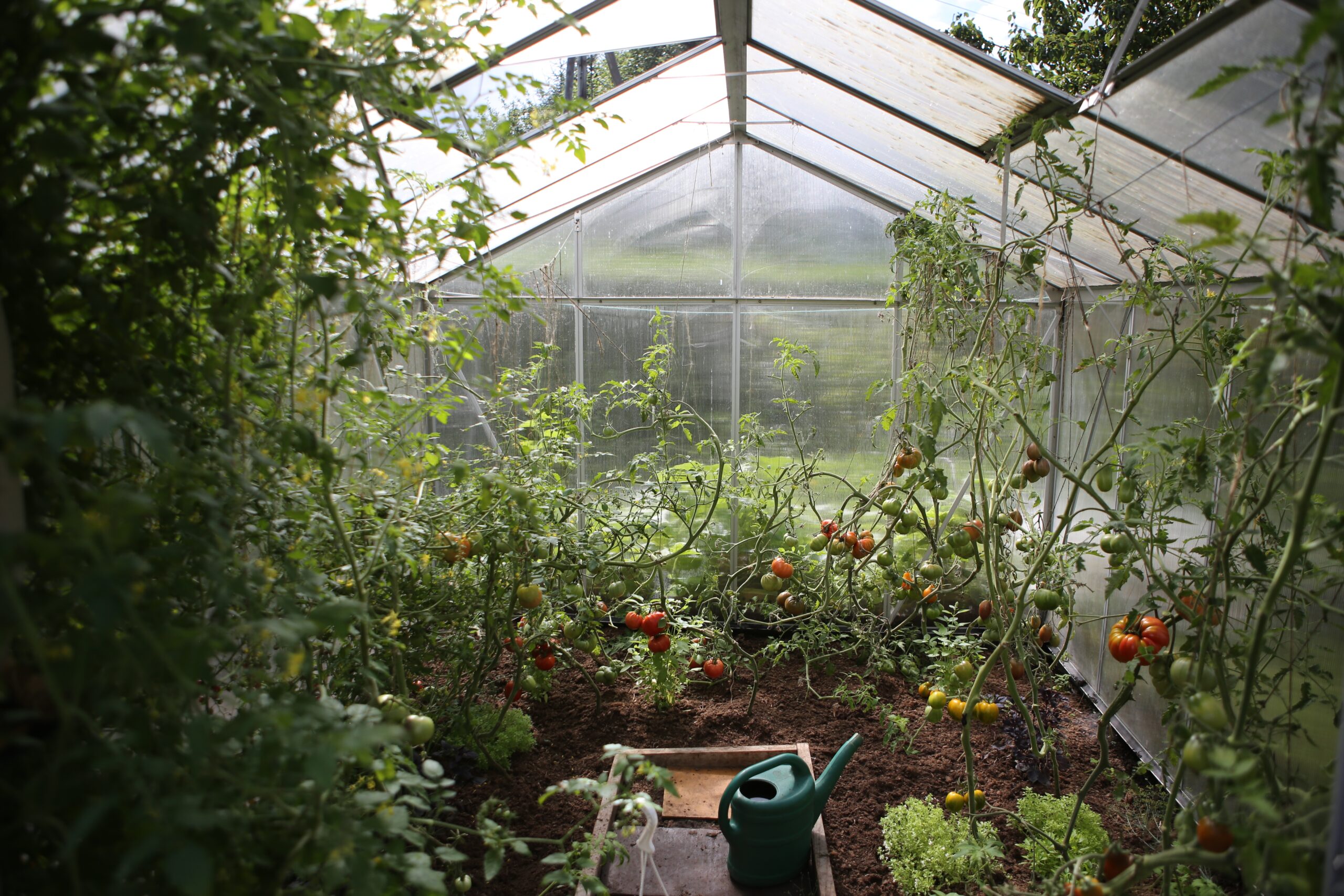Building a patio greenhouse can be a great way to extend your growing season and protect your plants from the elements. Here’s a step-by-step guide on how to make a basic patio greenhouse:
Materials you’ll need:
- PVC pipes (¾ inch diameter)
- PVC fittings (elbows, T-connectors, and cross-connectors)
- Clear plastic sheeting or greenhouse plastic
- Wood or metal stakes
- Zip ties or twine
- Scissors or utility knife
- Measuring tape
- Drill (optional)
- Screwdriver (optional)
- Velcro straps or clips (optional)
Step 1: Measure and plan
Measure the area on your patio where you want to set up the greenhouse. Consider the size of the plants you plan to grow and make sure you have enough space. Sketch a rough plan to visualize the structure.
Step 2: Frame construction
Cut the PVC pipes into the desired lengths for your frame. These will form the ribs of your greenhouse. Attach the PVC fittings to create the frame structure. Use elbows for corners, T-connectors for the roof ridge, and cross-connectors for stability. You can connect the PVC pieces by pushing them together firmly or by using PVC glue for added strength.
Step 3: Secure the frame
Use wood or metal stakes to anchor the PVC frame to the ground. Hammer them into the ground at regular intervals along the outside edges of the greenhouse. Secure the stakes to the PVC frame using zip ties or twine, ensuring the structure is stable and won’t be easily blown over.
Step 4: Cover the greenhouse
Drape the clear plastic sheeting or greenhouse plastic over the PVC frame. Make sure it covers the entire structure and reaches the ground on all sides. Use zip ties, twine, or Velcro straps to secure the plastic to the frame. Cut any excess plastic using scissors or a utility knife.
Step 5: Ventilation and access
To provide proper ventilation, you can leave openings at the bottom or top of the greenhouse. You can also create doors using the plastic sheeting or attach hinged doors using PVC and the appropriate connectors. Additionally, you may consider installing windows or vents using PVC and plastic sheeting for better airflow.
Step 6: Optional enhancements
Depending on your needs, you can add additional features such as shelves, irrigation systems, or temperature controls to your patio greenhouse. These additions will depend on the plants you intend to grow and your local climate conditions.
Remember to monitor the temperature and humidity inside your greenhouse regularly, as it can get quite hot during sunny days. You may need to provide shade or introduce cooling mechanisms to maintain the optimal environment for your plants.
Always ensure the greenhouse is properly ventilated to prevent overheating or excessive humidity, as these can harm your plants.
How Big should a Patio Greenhouse be?
The size of a greenhouse can vary depending on several factors, including your specific needs, available space, and the type of plants you want to grow. Here are some considerations to help you determine the size of your greenhouse:
- Available space: Measure the area where you plan to set up the greenhouse. Consider the dimensions and shape of the space to determine the maximum size that will fit comfortably.
- Purpose: Determine the purpose of your greenhouse. Are you planning to grow a few plants for personal use, start seedlings, or have a larger-scale production? The purpose will influence the size requirements.
- Plant selection: Consider the types and quantity of plants you intend to grow. Some plants require more space than others. Larger plants or those that spread out, like tomatoes or cucumbers, will need more room, while smaller plants like herbs or lettuce can be grown in a smaller space.
- Walkways and work area: Remember to account for walkways and space for you to move comfortably within the greenhouse. Leave enough room to access plants for watering, pruning, and harvesting. You may also want to include a workbench or storage area for gardening tools and supplies.
- Future expansion: Consider whether you may want to expand your greenhouse in the future. If so, plan for additional space or leave room for possible expansion.
As a starting point, a small greenhouse could be around 6 feet by 8 feet (1.8 meters by 2.4 meters), which provides enough space for a few shelves or a workbench. If you have more space and want a larger greenhouse, common sizes range from 8 feet by 10 feet (2.4 meters by 3 meters) to 20 feet by 30 feet (6 meters by 9 meters) or even larger for commercial operations.
Remember to check local building codes and regulations, as there may be restrictions on the size and location of greenhouses in your area.
What is the best way to build a small greenhouse?
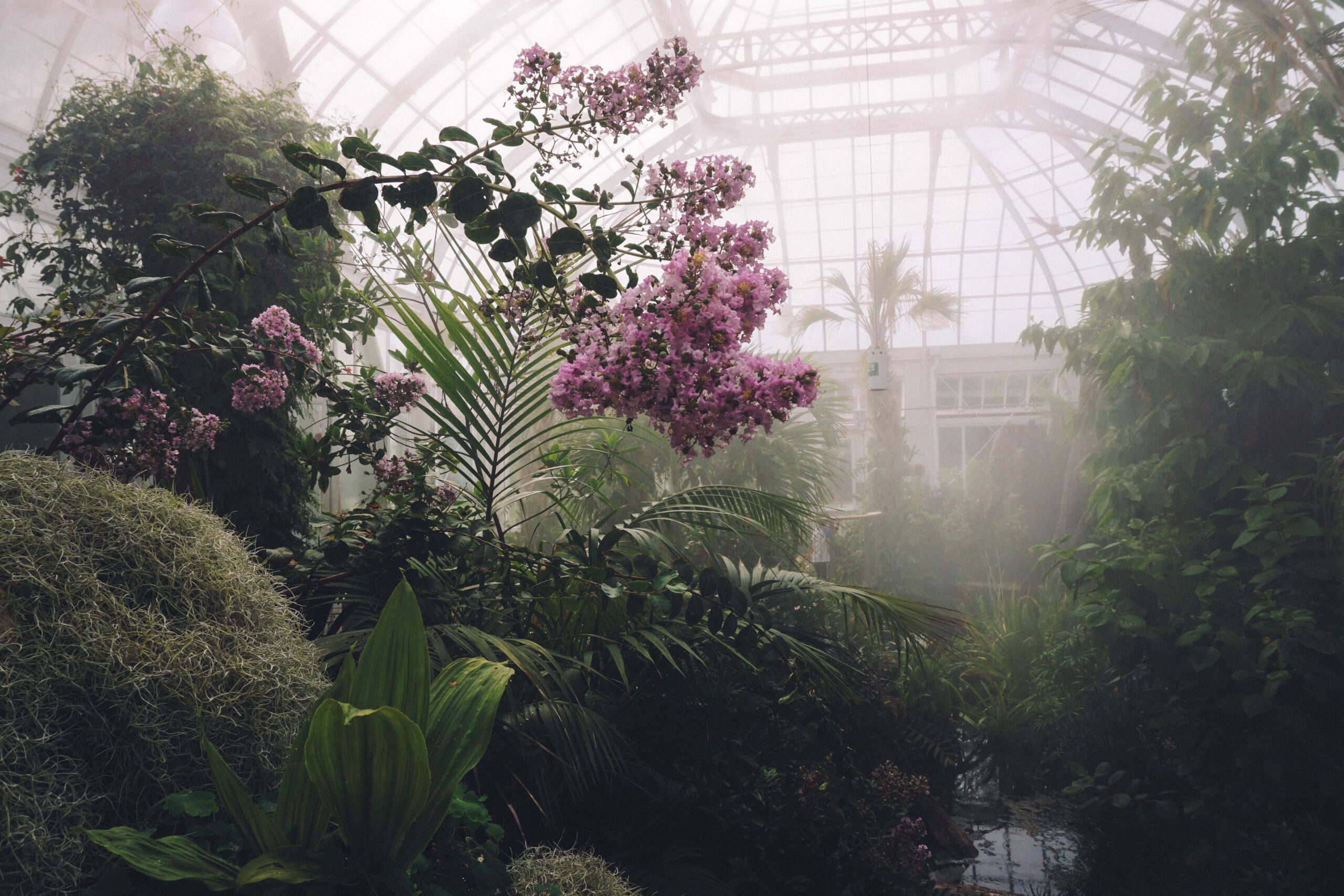
When building a small greenhouse, there are several approaches you can take. Here’s a step-by-step guide on one of the commonly used methods to construct a small greenhouse:
Materials you’ll need:
- Pressure-treated lumber or cedar boards
- Clear greenhouse plastic or polycarbonate panels
- Galvanized screws or nails
- Hinges and door hardware (if applicable)
- Ventilation system (optional)
- Work gloves, safety glasses, and other protective gear
- Measuring tape
- Drill or screwdriver
- Saw (circular saw or miter saw)
- Level
- Hammer or nail gun
Step 1: Choose a location
Select a suitable location for your small greenhouse. Ensure it receives adequate sunlight and is easily accessible for maintenance and watering. Consider factors such as drainage, wind exposure, and nearby structures that may cast shadows.
Step 2: Prepare the foundation
Prepare the foundation for your greenhouse. You can use a variety of options, including a concrete pad, gravel base, or pressure-treated lumber for framing. Ensure the foundation is level and provides stability for the structure.
Step 3: Frame construction
Cut the pressure-treated lumber or cedar boards to the desired lengths for your frame. Construct the base by attaching the boards together with galvanized screws or nails. Continue building the frame by adding uprights at regular intervals, connecting them to the base securely. Add additional cross beams for support, if needed.
Step 4: Install the covering
Once the frame is complete, carefully install the clear greenhouse plastic or polycarbonate panels. Secure them to the frame using screws or nails, ensuring a tight fit. Overlap the panels slightly to prevent gaps and ensure proper insulation.
Step 5: Door and ventilation
If desired, install a door using hinges and appropriate hardware. Make sure the door provides a good seal and easy access. For ventilation, consider adding windows or vents to allow for airflow. These can be manually operated or automated, depending on your preference and budget.
Step 6: Finishing touches
Inspect the greenhouse for any sharp edges or protruding nails. Sand or file down any rough spots to prevent injuries. Consider adding shelves, benches, or hanging systems inside the greenhouse to optimize space for your plants.
Step 7: Maintenance and care
Regularly inspect the greenhouse for damage, especially during extreme weather conditions. Clean the plastic or polycarbonate panels periodically to maintain maximum light transmission. Ensure proper ventilation and temperature control based on the needs of your plants.
Remember to consult local building codes and regulations, as well as consider any additional requirements specific to your climate or region. Building permits or restrictions may apply depending on your location.
Where can I get Supplies to build a small Greenhouse?
There are several places where you can find supplies to build a small greenhouse. Here are some common options:
- Local home improvement stores: Visit your nearest home improvement stores such as Home Depot, Lowe’s, or Ace Hardware. They often carry a range of building materials like pressure-treated lumber, screws, nails, hinges, and other hardware necessary for greenhouse construction. They may also have greenhouse plastic or polycarbonate panels available.
- Garden centers and nurseries: Check out local garden centers and nurseries that specialize in plants and gardening supplies. They may carry greenhouse-specific materials such as greenhouse plastic, shading fabric, ventilation systems, and other greenhouse accessories.
- Online retailers: Numerous online retailers offer a wide range of greenhouse supplies. Websites like Amazon, Greenhouse Megastore, and Gothic Arch Greenhouses provide a variety of greenhouse construction materials, including lumber, connectors, plastic sheeting, and other essential components. You can browse their selections, compare prices, and have the supplies delivered to your doorstep.
- Local farmers’ supply stores: Farmers’ supply stores often stock agricultural and gardening supplies, including greenhouse materials. They may have greenhouse plastic, specialized greenhouse coverings, and additional equipment needed for ventilation or irrigation.
- Salvage yards and recycling centers: Consider checking salvage yards or recycling centers for reclaimed or used building materials. You might find windows, doors, or other items that can be repurposed for your greenhouse. This option can be cost-effective and environmentally friendly.
- Specialty greenhouse suppliers: If you’re looking for specific greenhouse supplies or more specialized materials, consider contacting specialty greenhouse suppliers. They offer a wide range of products designed specifically for greenhouse construction, including structural components, covering materials, and climate control systems.
Remember to compare prices, quality, and availability before making a purchase. Additionally, local suppliers or specialty greenhouse suppliers might offer expertise and guidance in choosing the right materials for your specific greenhouse project.
Yes, it is possible to build a greenhouse indoors, commonly known as an indoor greenhouse or a grow room. Indoor greenhouses are particularly useful when you have limited outdoor space, want to grow plants year-round, or need more control over environmental conditions.
Can I build an Greenhouse Indoors?
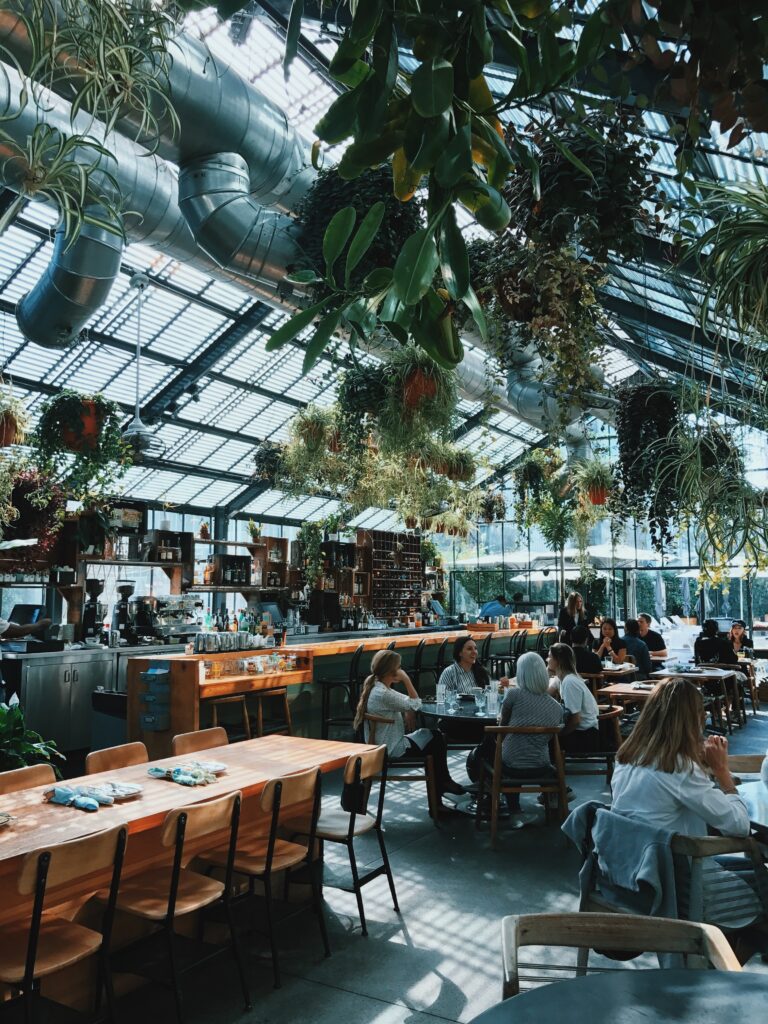
Yes. Here are some key considerations for building an indoor greenhouse:
- Location: Choose a suitable location within your home or building for the indoor greenhouse. Consider factors such as access to natural light or the ability to provide artificial lighting, ventilation options, available space, and proximity to a water source.
- Lighting: Since indoor environments may not provide sufficient natural light, you will need to supplement with artificial lighting. High-quality LED grow lights or fluorescent lights specifically designed for plant growth are commonly used in indoor greenhouses. Ensure the lighting system provides adequate intensity and covers the required light spectrum for optimal plant growth.
- Ventilation: Proper ventilation is crucial in an indoor greenhouse to control temperature, humidity, and air circulation. Install exhaust fans or ventilation systems to remove stale air and bring in fresh air. Consider using carbon filters to reduce odors and air filtration systems to prevent pests or contaminants from entering the greenhouse.
- Climate control: Maintaining the right temperature and humidity levels is essential for plant health. Use thermostats, humidifiers, dehumidifiers, and heaters (if necessary) to regulate the climate within the indoor greenhouse. Monitoring devices like temperature and humidity sensors can help you maintain optimal conditions.
- Growing containers and media: Choose suitable containers or hydroponic systems for your plants based on their needs. Use high-quality potting soil or hydroponic growing media for optimal plant growth and root development.
- Watering and drainage: Ensure access to a water source and proper drainage for your plants. Consider using trays, saucers, or grow bags with drainage holes to prevent waterlogging and root rot.
- Pest control: Indoor environments are not immune to pests and diseases. Implement preventive measures such as regular plant inspections, maintaining cleanliness, and using organic pest control methods or beneficial insects to keep pests at bay.
- Safety precautions: When building an indoor greenhouse, ensure you follow safety guidelines, especially when it comes to electrical connections and lighting systems. Install GFCI outlets, use grounded electrical cords, and follow manufacturer instructions for lighting and equipment.
Remember to research the specific needs of the plants you intend to grow indoors, as different plants have different requirements for light, temperature, humidity, and nutrients. Adapt your indoor greenhouse setup accordingly to create an environment conducive to healthy plant growth.
The Best Plants that you Can Grow in a Small Greenhouse:
A small greenhouse can accommodate a variety of plants, depending on the available space, environmental conditions, and your preferences. Here are some popular plants that can be grown in a small greenhouse:
- Herbs: Herbs like basil, parsley, mint, rosemary, and thyme are well-suited for small greenhouses. They are compact, aromatic, and often used in cooking or for medicinal purposes.
- Salad greens: Lettuce, spinach, arugula, and other salad greens are ideal for small greenhouses. They have a quick growth cycle and can be continuously harvested for fresh, homegrown salads.
- Tomatoes: Dwarf or determinate varieties of tomatoes are suitable for small greenhouses. They produce compact plants and can be trellised or grown in hanging baskets to maximize space.
- Peppers: Compact pepper varieties, such as bell peppers or chili peppers, can thrive in small greenhouses. Provide support as needed, and they will produce a bountiful harvest.
- Cucumbers: Bush or dwarf cucumber varieties are well-suited for small greenhouses. They can be trained on trellises or allowed to cascade in hanging baskets.
- Strawberries: Strawberries can be grown in containers or hanging baskets in a small greenhouse. They are a great option for vertical gardening and provide delicious, homegrown berries.
- Flowers: Many flowering plants can be grown in small greenhouses to add beauty and fragrance. Consider options like pansies, marigolds, petunias, geraniums, or snapdragons.
- Microgreens: Microgreens are young, tender greens that are harvested when they are just a few inches tall. They are packed with nutrients and can be grown in trays or containers in a small greenhouse.
- Succulents: If you are interested in low-maintenance plants, succulents are a great choice. They come in various shapes and sizes and can thrive in the controlled environment of a small greenhouse.
- Exotic or specialty plants: Depending on your interests, you can explore growing exotic or specialty plants like orchids, carnivorous plants, bonsai trees, or tropical plants that require specific conditions and benefit from the controlled environment of a small greenhouse.
Remember to consider the specific environmental requirements of each plant, such as temperature, light, and humidity levels, when planning and managing your small greenhouse.
How Often Do I need to Water Plants in a Greenhouse?
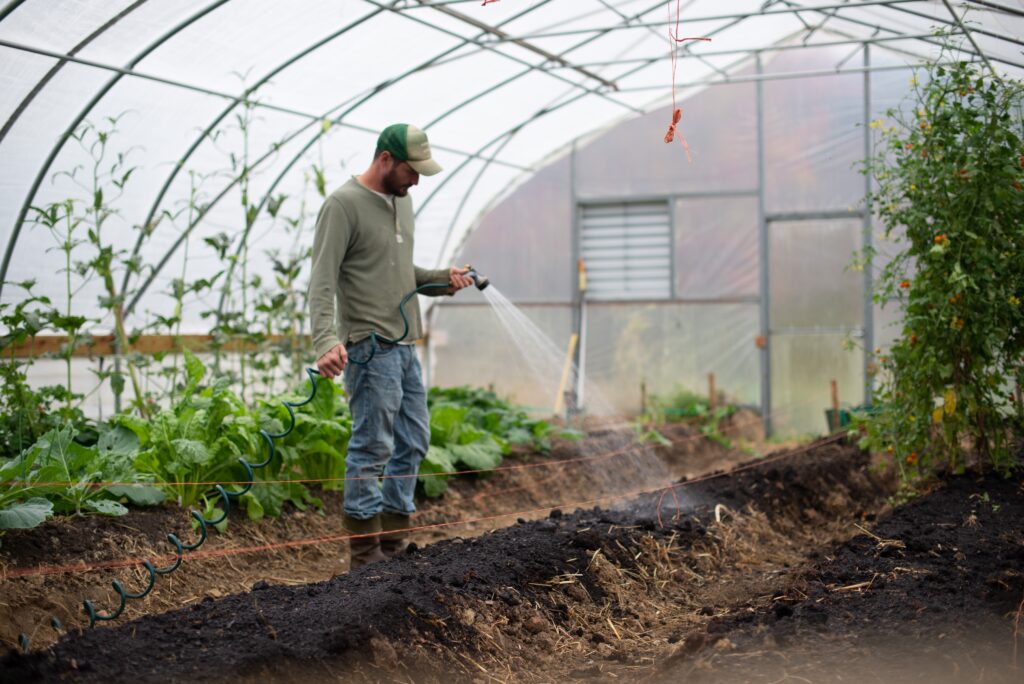
The frequency of watering plants in a greenhouse can vary depending on several factors, including the type of plants, the stage of growth, the greenhouse environment, and the season. Here are some general guidelines to help you determine how often to water your greenhouse plants:
- Plant needs: Different plants have different water requirements. Some plants prefer consistently moist soil, while others prefer drier conditions. Research the specific watering needs of the plants you are growing to determine the frequency.
- Growth stage: The watering needs of plants can vary during different growth stages. Newly planted seeds or seedlings may require more frequent watering to establish roots, while mature plants may need less frequent watering. Monitor the moisture level of the soil to determine when to water.
- Environmental conditions: The temperature, humidity, and air circulation within your greenhouse can affect how quickly plants dry out. Higher temperatures and low humidity levels can cause moisture to evaporate faster, requiring more frequent watering. Monitor the conditions within your greenhouse and adjust watering accordingly.
- Soil moisture level: Check the moisture level of the soil before watering. Stick your finger about an inch into the soil to feel if it’s dry or moist. Alternatively, use a moisture meter to get an accurate reading. Avoid overwatering, as it can lead to root rot and other issues. Allow the top layer of soil to dry slightly between waterings, but be careful not to let the plants wilt excessively.
- Watering method: The method of watering you use can also impact the frequency. Watering from the bottom, such as by using a tray or reservoir, allows plants to absorb moisture as needed and can reduce the risk of overwatering. However, some plants prefer overhead watering to simulate rainfall. Adjust your watering method based on the preferences of the plants you are growing.
- Seasonal changes: During hot summer months, plants generally require more frequent watering to compensate for increased evaporation. In contrast, during cooler seasons or winter, plants may require less frequent watering due to reduced growth and evaporation rates. Adjust your watering schedule accordingly as seasons change.
Remember that these are general guidelines, and it’s important to observe and monitor your plants individually. Factors such as pot size, plant health, and specific environmental conditions within your greenhouse can influence watering needs. Regularly check the moisture level of the soil and adjust your watering schedule as needed to ensure your plants receive adequate moisture without being waterlogged.
How Often Should I Clean my Greenhouse?
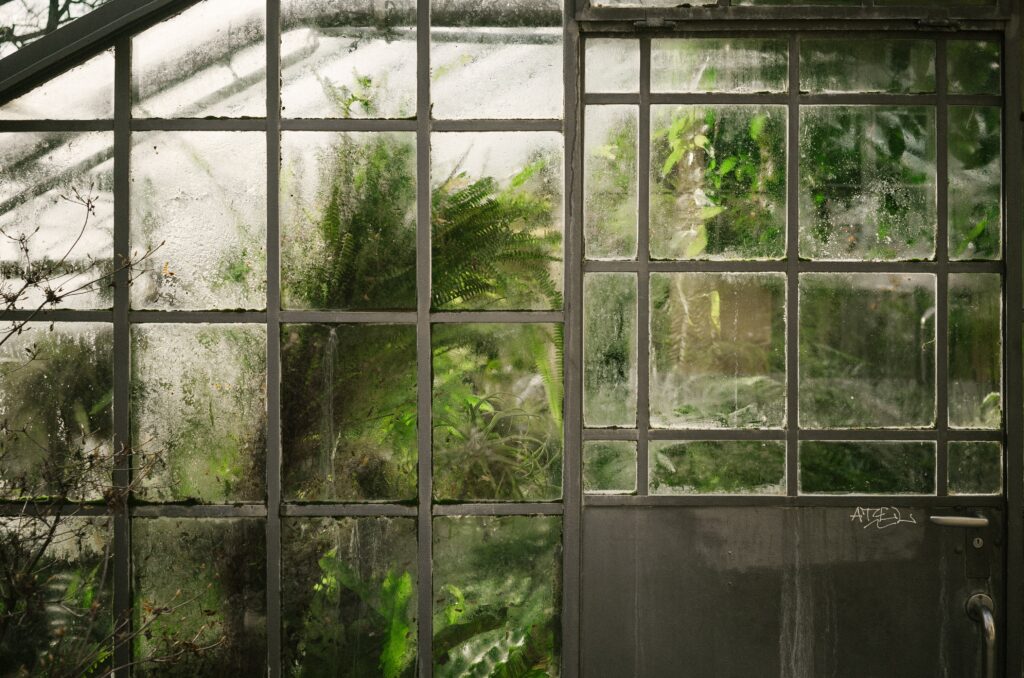
Regular cleaning of your greenhouse is essential to maintain a healthy environment for your plants and ensure optimal growing conditions. Here are some general guidelines on how often you should clean your greenhouse:
- Seasonal cleaning: It is recommended to perform a thorough cleaning of your greenhouse at least once a year, ideally during the transition between growing seasons. This deep cleaning helps remove any built-up debris, pests, and diseases that may have accumulated over time. Start by removing all plants, pots, and equipment from the greenhouse before proceeding with the cleaning process.
- Monthly or quarterly cleaning: Throughout the year, you should perform regular maintenance and cleaning tasks on a monthly or quarterly basis to keep your greenhouse in good condition. This includes removing fallen leaves, dead plant material, and other debris that may have accumulated. Regularly sweep or vacuum the floors and benches to keep them clean. Check for any signs of pests or diseases and take appropriate measures to address them promptly.
- Clean plant containers and trays: It is important to clean and sanitize plant containers, trays, and other equipment regularly to prevent the buildup of pathogens or pests. After each use, clean containers and trays with a mild soap or bleach solution, rinse thoroughly, and allow them to dry before reuse. This helps minimize the risk of transmitting diseases or pests to your plants.
- Clean glazing or covering material: If your greenhouse has glass or polycarbonate panels, clean them periodically to ensure maximum light transmission. Remove dirt, dust, or algae that may have accumulated on the glazing. Use a soft brush or sponge with a mild detergent and water solution to clean the panels, and rinse them thoroughly. This will help maintain optimal light levels inside the greenhouse.
- Maintain cleanliness in walkways and working areas: Keep walkways and working areas in your greenhouse clean and clear. Regularly sweep or clean these areas to remove dirt, debris, or spilled materials. This will help prevent the spread of pests or diseases and provide a safe working environment.
- Check and clean ventilation systems: If your greenhouse has ventilation systems, such as fans or louvers, inspect them regularly to ensure they are functioning properly. Clean or replace filters as needed to maintain good air circulation and prevent the buildup of dust or debris.
Remember that these are general guidelines, and the cleaning frequency may vary based on factors such as the size of your greenhouse, the type of plants you grow, and the local environmental conditions. Regular observation and maintenance will help you determine when cleaning is necessary to keep your greenhouse in optimal condition.
How Do I Clean my Greenhouse?
Cleaning your greenhouse is an important maintenance task to keep it in good condition and provide a healthy environment for your plants. Here’s a step-by-step guide on how to clean your greenhouse:
- Clear the greenhouse: Start by removing all plants, pots, and equipment from the greenhouse. Place them in a safe and protected area outside the greenhouse.
- Remove debris: Sweep or use a leaf blower to remove any fallen leaves, dead plant material, or other debris from the greenhouse floor and benches. Pay attention to corners, crevices, and hard-to-reach areas where debris may accumulate.
- Wash surfaces: Prepare a mild soap or detergent solution by mixing it with water in a bucket. Use a soft brush or sponge to wash the surfaces of the greenhouse, including the walls, benches, and any other exposed areas. Scrub gently to remove dirt, algae, or stains. Take care when cleaning delicate materials such as polycarbonate panels to avoid scratching.
- Rinse thoroughly: After washing, thoroughly rinse all surfaces with clean water. Use a hose or bucket to rinse away soap residue and any remaining dirt. Pay attention to remove all soap residue to prevent it from affecting your plants.
- Sanitize containers and trays: Clean and sanitize plant containers, trays, and other equipment that will be used inside the greenhouse. Use a mild bleach solution (1 part bleach to 9 parts water) or a commercial horticultural disinfectant. Scrub the containers and trays, rinse them thoroughly, and allow them to dry before using them again.
- Clean walkways and working areas: Sweep or clean the walkways, working areas, and any other accessible surfaces in your greenhouse. Remove dirt, debris, or spilled materials to maintain cleanliness and prevent potential hazards.
- Disinfect if needed: If you have experienced pest or disease issues in your greenhouse, consider disinfecting the surfaces. Use a horticultural disinfectant or a bleach solution to kill pathogens and reduce the risk of contamination. Follow the instructions provided by the manufacturer and take necessary safety precautions.
- Allow drying time: After cleaning, allow the greenhouse to dry thoroughly before reintroducing plants and equipment. Adequate drying time helps prevent excess moisture and the growth of mold or fungi.
Regular cleaning and maintenance will help keep your greenhouse in good condition and provide an optimal environment for your plants. Perform cleaning tasks periodically as needed based on the specific conditions and requirements of your greenhouse and the plants you grow.
What Kind of Upkeep Does a Greenhouse have?
A greenhouse requires regular upkeep to ensure its proper functioning, maintain a healthy environment for your plants, and promote optimal plant growth. Here are some common upkeep tasks you should consider for your greenhouse:
- Cleaning: Regularly clean the greenhouse to remove debris, dirt, algae, and other contaminants. This includes sweeping or vacuuming the floors, benches, and other surfaces, as well as washing the glazing or covering material.
- Ventilation: Ensure proper ventilation in the greenhouse to maintain good air circulation. Regularly check and clean ventilation systems, such as fans, louvers, or vents, to ensure they are functioning effectively. This helps control temperature, humidity, and prevents the buildup of stagnant air.
- Monitoring temperature and humidity: Regularly monitor and adjust temperature and humidity levels within the greenhouse. Use thermometers and hygrometers to keep track of these factors and make necessary adjustments using heating, cooling, or humidifying systems.
- Irrigation and watering: Develop a watering schedule based on the needs of your plants and regularly check the moisture level of the soil. Adjust watering frequency and amount as necessary to ensure proper hydration without overwatering or waterlogging.
- Pest and disease management: Regularly inspect your plants for signs of pests or diseases. Implement preventive measures such as regular monitoring, maintaining cleanliness, practicing good hygiene, and using organic pest control methods or beneficial insects when necessary.
- Fertilization and nutrient management: Monitor and maintain proper nutrient levels in the soil or growing media. Fertilize your plants as needed to ensure they receive the necessary nutrients for healthy growth. Follow the recommended fertilization schedule and apply appropriate fertilizers based on the specific requirements of your plants.
- Pruning and training: Regularly prune and train your plants to promote healthy growth and maintain the desired shape. Remove dead or damaged foliage, thin out crowded areas, and provide support or trellises for vining or climbing plants.
- Repairs and maintenance: Regularly inspect your greenhouse for any damage, such as broken glass or damaged framework. Address repairs promptly to maintain the integrity of the structure and prevent further damage.
- Monitoring and record-keeping: Keep a record of important data such as temperature, humidity, light levels, and growth progress of your plants. This helps you monitor trends, identify patterns, and make adjustments for optimal plant care.
- Seasonal considerations: Adapt your greenhouse upkeep tasks based on the changing seasons. For example, during the winter, you may need to provide extra insulation, adjust heating systems, and protect plants from frost or cold temperatures.
It’s important to establish a routine for greenhouse upkeep and to address any issues promptly. Regular monitoring, maintenance, and care will help create an optimal environment for your plants and ensure successful greenhouse gardening.
How Much Does a Patio Greenhouse cost?
$50-$300. The cost of a patio greenhouse can vary depending on various factors such as size, materials used, features, and where you purchase it from. Here is a general cost range to give you an idea:
- Small portable greenhouses: These are typically the least expensive option and can range from around $50 to $300. They are often made of lightweight materials such as PVC or steel frames with plastic or polyethylene covers. These smaller greenhouses are suitable for starting seeds or growing a few plants.
- DIY or kit greenhouses: If you choose to build your own greenhouse or purchase a greenhouse kit, the cost can vary widely depending on the size, design, and materials used. DIY options allow for more customization but require more time and effort. Kit greenhouses can range from a few hundred dollars to a few thousand dollars, depending on the size and features.
- Pre-built patio greenhouses: These are ready-to-use greenhouses that come pre-assembled or partially assembled. They offer convenience and often include features like sturdy frames, polycarbonate panels, ventilation systems, and shelving. The cost of pre-built patio greenhouses can range from a few hundred dollars to several thousand dollars, depending on the size, quality, and features.
- High-end patio greenhouses: For larger, more elaborate patio greenhouses with advanced features like automated climate control systems, professional installation, and durable materials like glass, the cost can range from several thousand dollars to tens of thousands of dollars.
It’s important to consider your specific needs, budget, and long-term goals when deciding on a patio greenhouse. Additionally, keep in mind that ongoing costs such as heating, cooling, and maintenance should also be considered in your overall budget.
Is a Greenhouse Safe for Humans to stay Inside?
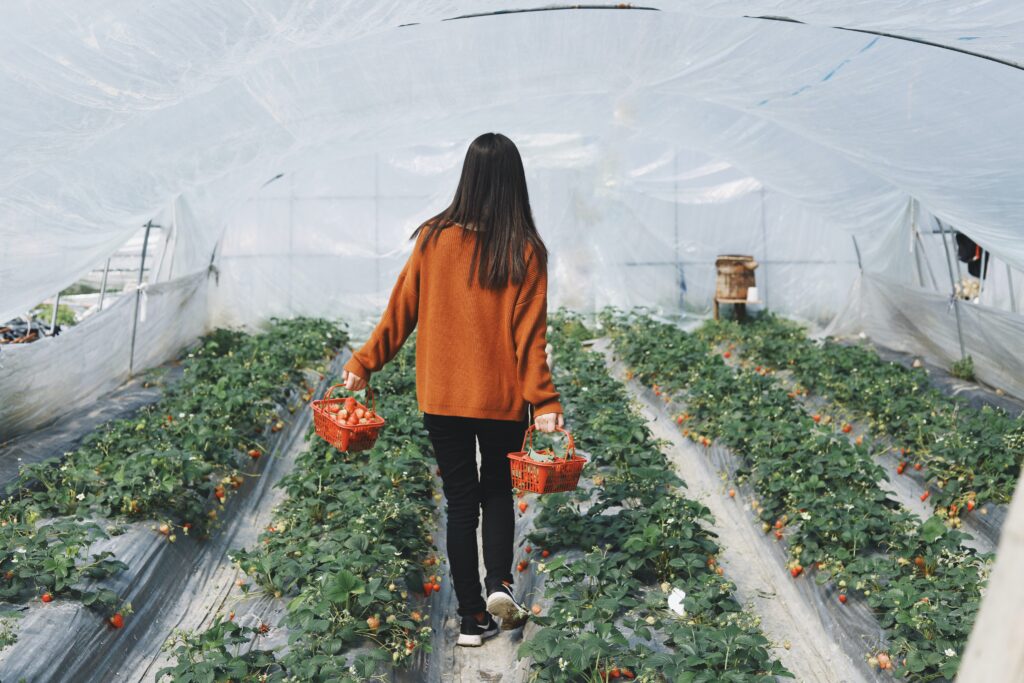
A greenhouse can be safe for humans to be inside, but certain precautions should be taken to ensure a comfortable and healthy environment. Here are some factors to consider:
- Adequate ventilation: A crucial factor in a greenhouse to maintain fresh air and regulate temperature and humidity levels. Ensure that your greenhouse has proper ventilation systems such as fans, vents, or windows that can be opened to allow for air circulation. This helps prevent the buildup of excessive heat, condensation, or stagnant air.
- Temperature control: Greenhouses can become hot, especially during the summer months. It’s important to monitor and control the temperature inside the greenhouse to prevent overheating. Install shading systems or use appropriate ventilation methods to regulate the temperature and create a comfortable environment.
- Air quality: Greenhouses can have elevated levels of humidity, which may lead to increased moisture and the potential for mold or fungal growth. Regularly monitor and manage humidity levels to maintain good air quality. Proper ventilation and air circulation help reduce the risk of mold or mildew.
- Chemical usage: Be cautious when using chemicals such as pesticides, fertilizers, or fungicides in the greenhouse. Follow the instructions carefully and use protective measures, such as wearing gloves and masks, to prevent exposure to potentially harmful substances. Allow for proper ventilation and take care to prevent accidental ingestion or contact.
- Allergies and sensitivities: Some individuals may have allergies or sensitivities to certain plants, pollens, or other substances present in a greenhouse environment. If you or others have known allergies or sensitivities, take appropriate precautions, such as wearing masks or minimizing exposure to potential allergens.
- Structural integrity: Ensure that the greenhouse structure is sound and secure to prevent any risk of collapse or injury. Regularly inspect the framework, glazing, and other components for damage or wear and tear. Repair or replace any damaged parts promptly.
- Emergency exits: In the event of an emergency, ensure that there are clear and accessible exits from the greenhouse. Keep pathways clear of clutter and obstructions to allow for a quick and safe evacuation if needed.
By addressing these factors and maintaining a well-maintained and controlled environment, a greenhouse can be a safe place for humans to work, enjoy plants, and engage in gardening activities. Regular monitoring, maintenance, and adherence to safety guidelines will help ensure a safe and enjoyable greenhouse experience.
Is it Safe for My Pets to Be Inside My Greenhouse?
The safety of pets in a greenhouse depends on several factors, including the type of pets, the plants being grown, and the specific conditions within the greenhouse. Here are some considerations to keep in mind:
- Toxic plants: Some plants commonly grown in greenhouses can be toxic to pets if ingested. It’s essential to research the plants you have in your greenhouse and ensure they are safe for your particular pets. Remove any toxic plants or keep them out of reach of your pets to prevent accidental ingestion.
- Chemicals and pesticides: Be cautious when using chemicals, pesticides, or fertilizers in your greenhouse. Some of these substances can be harmful to pets if they come into contact with them or ingest them. Always follow the instructions carefully and use pet-safe or organic alternatives whenever possible. Keep pets away from treated areas until it is safe for them to be exposed.
- Temperature and ventilation: Greenhouses can become hot and humid, which may not be ideal for certain pets, especially those sensitive to heat. Monitor the temperature inside the greenhouse and ensure there is adequate ventilation to prevent overheating. Provide a shaded area or a cool spot for your pets to retreat to, and never leave them unattended in the greenhouse for extended periods, especially in extreme weather conditions.
- Escape prevention: Make sure your pets cannot escape from the greenhouse. Ensure that doors, windows, and other openings are securely closed and that there are no gaps or holes that they can squeeze through. This is particularly important for smaller pets such as cats or small dogs.
- Potential hazards: Consider any potential hazards within the greenhouse that could pose a risk to your pets. These might include sharp tools, electrical cords, hanging plants, or unstable structures. Take measures to secure these hazards or keep them out of reach to prevent accidents or injuries.
- Allergies and sensitivities: Some pets may have allergies or sensitivities to certain plants or substances present in the greenhouse. Monitor your pets for any signs of allergies or adverse reactions. If you notice any symptoms, consult with a veterinarian and consider removing or relocating the offending plants.
- Supervision and interaction: When allowing your pets into the greenhouse, it’s important to supervise their activities and ensure they do not engage in behaviors that may be harmful, such as digging, chewing on plants, or knocking over pots. Provide appropriate toys or distractions to keep them occupied and redirect their attention away from the plants.
Always prioritize the safety and well-being of your pets when considering whether to allow them in the greenhouse. Assess the suitability of the greenhouse environment for your specific pets and make necessary adjustments to ensure their safety and prevent any potential hazards. If you have any concerns or specific questions, it’s advisable to consult with a veterinarian for personalized advice.
How Much Humidity Should be on the Inside of a Greenhouse?
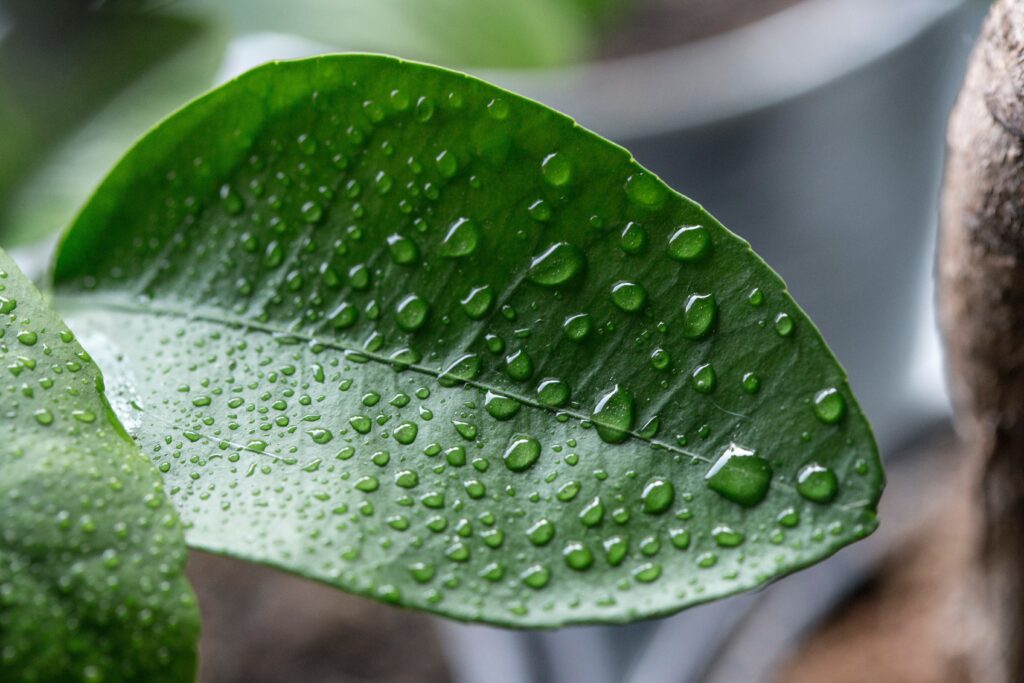
The ideal humidity level inside a greenhouse can vary depending on the types of plants you are growing and their specific requirements. However, as a general guideline, most greenhouse plants thrive in a humidity range of 50% to 70%. Here are a few considerations regarding humidity levels in a greenhouse:
- Different plant needs: Different plants have varying humidity preferences based on their natural habitat. Some plants, such as tropical or rainforest species, prefer higher humidity levels, while others, such as desert plants, prefer lower humidity. It’s important to research the specific humidity requirements of the plants you are growing and adjust the greenhouse environment accordingly.
- Growth stages: The humidity needs of plants can change during different growth stages. For example, many plants benefit from higher humidity during germination and early growth stages to support seedling development. As plants mature, they may require slightly lower humidity levels.
- Ventilation and airflow: Proper ventilation and airflow in the greenhouse are essential for maintaining optimal humidity levels. Ventilation systems such as fans, vents, or windows help regulate humidity by allowing moist air to escape and fresh air to enter the greenhouse. Adequate airflow prevents the buildup of excessive humidity and reduces the risk of fungal diseases.
- Condensation control: Condensation can occur in a greenhouse when warm, humid air comes into contact with cooler surfaces. Excessive condensation can promote the growth of mold, fungi, and disease. To control condensation, provide good air circulation, maintain proper ventilation, and ensure that surfaces such as glazing or covering materials are properly insulated.
- Monitoring humidity: Use a hygrometer, which is a device that measures humidity, to monitor the humidity levels inside your greenhouse. Place the hygrometer at plant canopy height for accurate readings. Regularly check the humidity levels and make adjustments as needed.
- Humidification methods: If your greenhouse requires higher humidity levels, you can use various methods to increase humidity. These include misting systems, humidifiers, evaporative cooling, or placing trays of water near plants to increase evaporation. Conversely, if humidity needs to be lowered, dehumidifiers or adequate ventilation can be used to reduce excess moisture.
Remember that while maintaining appropriate humidity levels is important, it’s equally crucial to avoid excessively high humidity, as this can lead to issues such as fungal diseases, poor plant growth, and increased pest activity. Continuously monitor and adjust humidity levels based on the specific needs of your plants to create a favorable growing environment in your greenhouse.
What is the Best Temperature for Inside a Greenhouse?
The best temperature inside a greenhouse depends on the specific plants you are growing, their stage of growth, and their natural habitat. However, as a general guideline, most greenhouse plants thrive in temperatures ranging from 65°F to 80°F (18°C to 27°C) during the day and slightly cooler temperatures at night. Here are some considerations regarding temperature in a greenhouse:
- Plant requirements: Different plants have different temperature preferences. Some plants, such as tropical or subtropical species, prefer higher temperatures, while others, such as cool-season vegetables, prefer cooler temperatures. It’s important to research the specific temperature requirements of the plants you are growing and adjust the greenhouse environment accordingly.
- Growth stages: The temperature needs of plants can vary during different growth stages. For example, many plants require higher temperatures for seed germination and early growth, while slightly cooler temperatures are often suitable for mature plants. Adjust the temperature settings based on the stage of growth of your plants.
- Day and night temperature differentials: It is common for greenhouse temperatures to be slightly higher during the day and slightly lower at night. This temperature differential helps mimic natural outdoor conditions and can promote healthy growth and development in plants.
- Ventilation and airflow: Proper ventilation and airflow in the greenhouse are crucial for temperature control. Ventilation systems such as fans, vents, or windows help regulate temperature by allowing hot air to escape and fresh air to enter the greenhouse. Adequate airflow prevents the buildup of excessive heat and helps maintain a stable temperature.
- Heating and cooling systems: Depending on your climate and the temperature requirements of your plants, you may need to implement heating or cooling systems in your greenhouse. Common heating methods include electric or gas heaters, while cooling can be achieved through shading, ventilation, or evaporative cooling methods.
- Monitoring temperature: Use a thermometer to monitor the temperature inside your greenhouse. Place the thermometer at plant canopy height for accurate readings. Regularly check the temperature and make adjustments as needed to maintain the desired range.
- Seasonal adjustments: Adjust the greenhouse temperature settings based on the changing seasons. In colder months, additional heating may be required, while in hotter months, shading and cooling methods become more important.
Remember that maintaining a consistent temperature is essential for plant health and growth. Drastic temperature fluctuations or prolonged exposure to extreme temperatures can stress or damage plants. Continuously monitor and adjust the temperature in your greenhouse to provide an optimal growing environment for your plants.
How to I Keep Pests out of my Greenhouse?
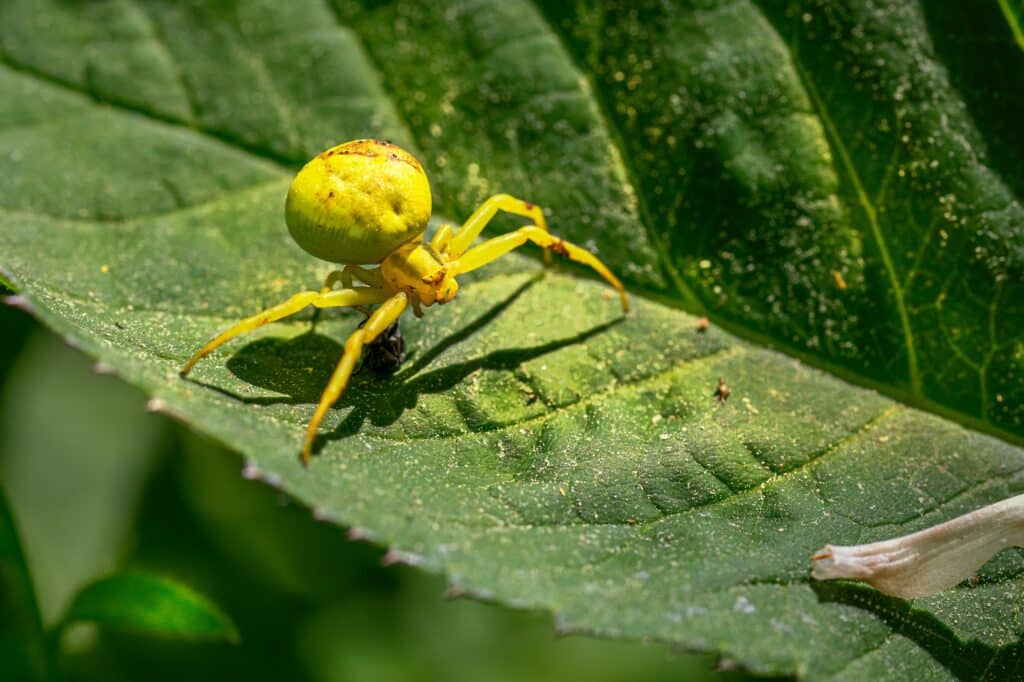
Keeping pests out of your greenhouse is important to protect your plants and ensure their healthy growth. Here are some effective strategies to help prevent and manage pests in your greenhouse:
- Regular inspection: Regularly inspect your plants for signs of pest activity. Look for pests themselves, such as insects, as well as damage to leaves, stems, or fruits. Early detection allows for prompt intervention and prevents pest populations from becoming established.
- Cleanliness and sanitation: Maintain a clean and tidy greenhouse environment. Remove fallen leaves, debris, and plant residues that can provide hiding places for pests. Clean the greenhouse structure, benches, and equipment regularly to eliminate potential pest habitats. Dispose of any infested or diseased plant material properly to prevent the spread of pests or diseases.
- Quarantine new plants: Before introducing new plants to your greenhouse, quarantine them for a period of time to monitor for any signs of pests or diseases. This helps prevent the introduction of pests into your greenhouse and allows you to address any issues before they spread to other plants.
- Proper ventilation: Good ventilation helps maintain airflow and prevents stagnant conditions that can attract pests. Ensure that your greenhouse has proper ventilation systems such as fans, vents, or windows. This promotes air circulation and helps deter pests.
- Physical barriers: Use physical barriers to prevent pests from entering your greenhouse. Install screens or mesh on doors, windows, and vents to keep out flying insects and larger pests. Seal any cracks or gaps in the greenhouse structure to prevent entry points for pests.
- Weed management: Weeds can harbor pests and provide a breeding ground for insects. Regularly remove weeds from both inside and outside the greenhouse to reduce potential pest populations.
- Beneficial insects: Consider introducing beneficial insects that prey on common pests. Ladybugs, lacewings, and predatory mites, for example, can help control aphids, thrips, and other pests naturally. Consult with local garden centers or agricultural extension services to determine the most suitable beneficial insects for your specific pest problems.
- Organic pest control methods: Implement organic pest control methods whenever possible. These include using insecticidal soaps, neem oil, horticultural oils, or botanical-based insecticides. Follow the instructions carefully and apply these products sparingly to avoid harming beneficial insects or plants.
- Crop rotation: Avoid planting the same crops in the same location year after year. Crop rotation helps disrupt pest life cycles and reduces the buildup of pests that are specific to certain plants. Rotate different plant families or crops with pest-resistant varieties to minimize pest problems.
- Monitoring and early intervention: Regularly monitor your plants for signs of pests. If you detect any pests, take immediate action using appropriate control methods. This may involve handpicking pests, using insecticidal sprays, or applying natural pest control methods.
By implementing these strategies, you can significantly reduce the risk of pests in your greenhouse and create a healthier growing environment for your plants. Regular monitoring, cleanliness, and proactive pest management are key to keeping your greenhouse pest-free.
What are the Positive Effects of Having a Greenhouse?
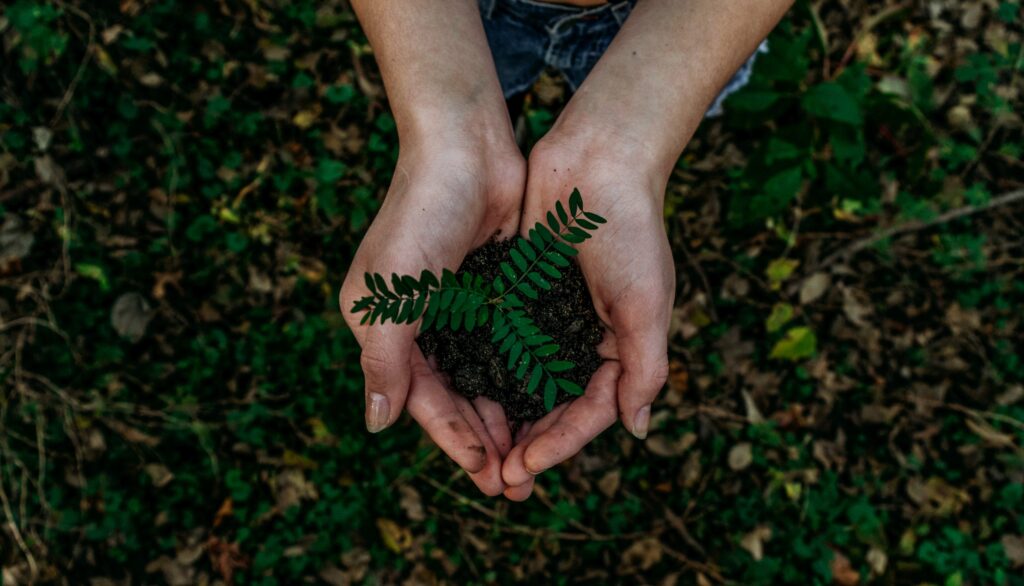
Having a greenhouse offers several positive effects that contribute to the success and enjoyment of gardening and plant cultivation. Here are some key benefits of having a greenhouse:
- Extended growing season: One of the primary advantages of a greenhouse is the ability to extend the growing season. By providing a controlled environment, a greenhouse allows you to start planting earlier in the spring and continue growing later into the fall. This means you can enjoy fresh produce, flowers, or herbs for a more extended period.
- Protection from the elements: A greenhouse acts as a protective shield against harsh weather conditions such as frost, wind, heavy rain, or extreme temperatures. It provides a sheltered space for plants to thrive without being subjected to sudden fluctuations or adverse weather events that could damage or hinder their growth.
- Enhanced plant growth: Greenhouses create a favorable environment for plant growth. The controlled temperature, humidity, and light conditions allow plants to grow more vigorously and efficiently. This promotes healthier plants, faster growth, and higher yields. You can also create customized microclimates within the greenhouse to suit the specific needs of different plants.
- Pest and disease management: A greenhouse provides a physical barrier that helps keep pests, insects, and larger animals away from your plants. Additionally, the controlled environment makes it easier to monitor and manage pest and disease outbreaks. By minimizing exposure to external sources of infestation, you can reduce the risk of damage and maintain healthier plants.
- Seasonal flexibility: With a greenhouse, you have the flexibility to grow a wider variety of plants, including those that may not be suited to your local climate or growing conditions. You can experiment with different plant species, try out exotic or specialty plants, and grow plants that are out of season in your region. This opens up a world of possibilities for gardening and expands your options as a plant enthusiast.
- Propagation and seed starting: Greenhouses provide an ideal environment for seed starting and plant propagation. You can start seeds earlier in the season, nurture seedlings, and propagate plants more successfully. This allows you to save money on buying new plants and have a greater control over the quality and variety of plants you grow.
- Personal enjoyment and relaxation: A greenhouse is not only a functional space but also a place of personal enjoyment and relaxation. It offers a peaceful and nurturing environment where you can connect with nature, tend to your plants, and escape from the stresses of daily life. Many gardeners find working in a greenhouse to be therapeutic and rewarding.
- Education and experimentation: Greenhouses provide a great platform for learning about plant biology, experimenting with different cultivation techniques, and expanding your horticultural knowledge. It allows you to observe plant growth and behavior up close, conduct experiments, and gain hands-on experience in gardening and plant care.
Overall, having a greenhouse enhances your gardening experience, expands your gardening possibilities, and improves the success and well-being of your plants. It offers a sanctuary for plants and gardeners alike, creating a harmonious and productive space for cultivating and enjoying the beauty of nature.

